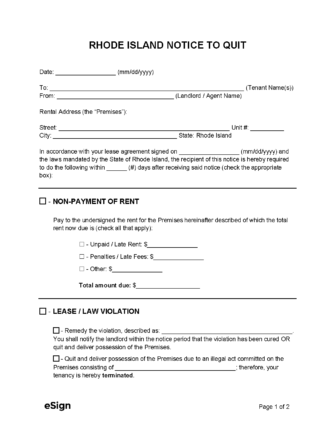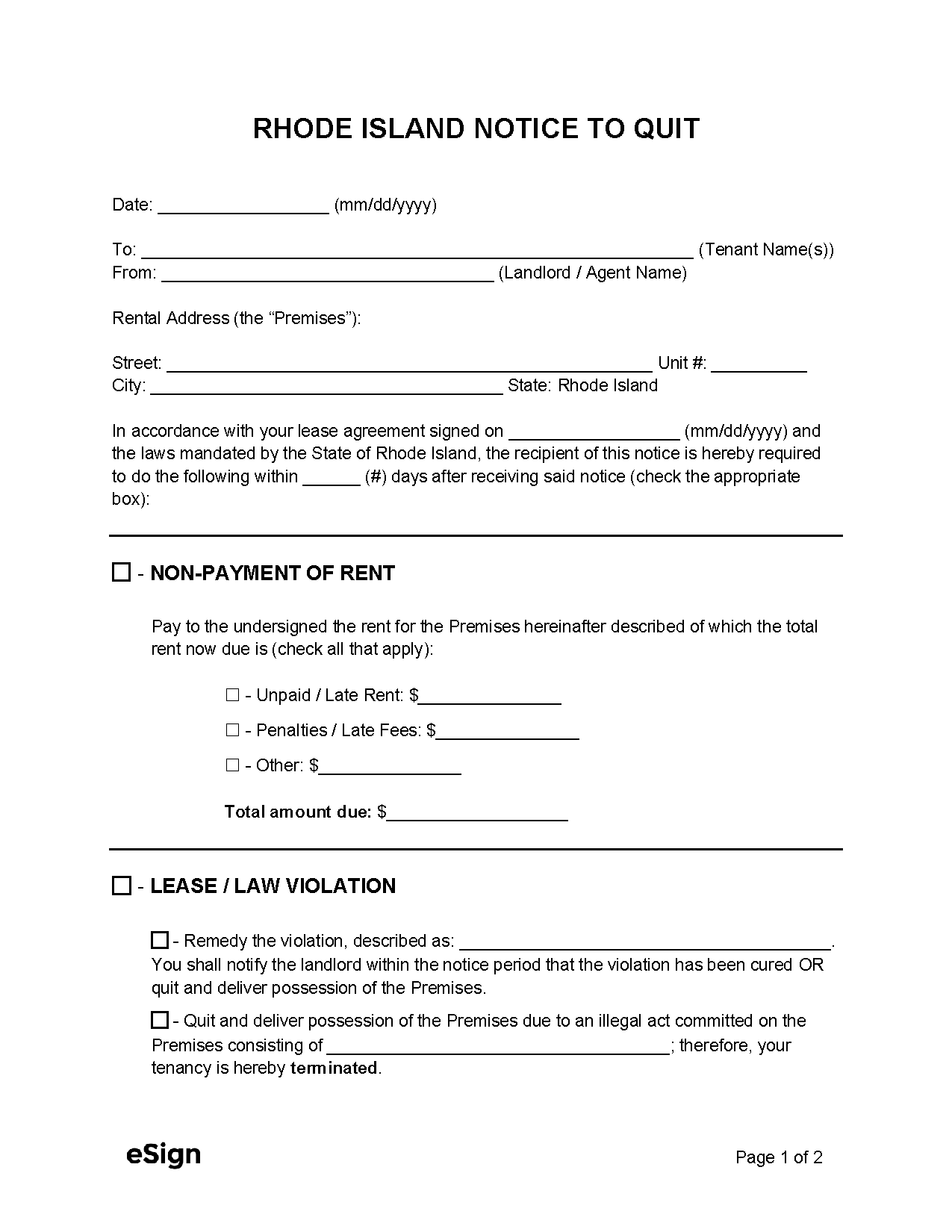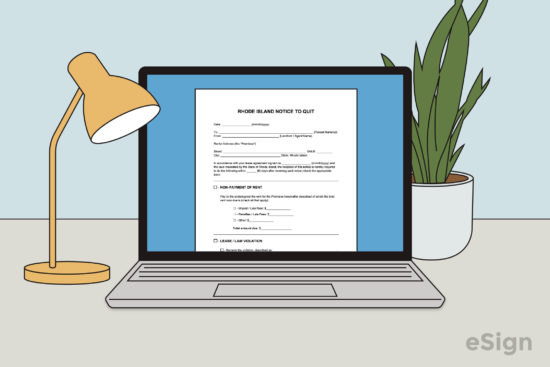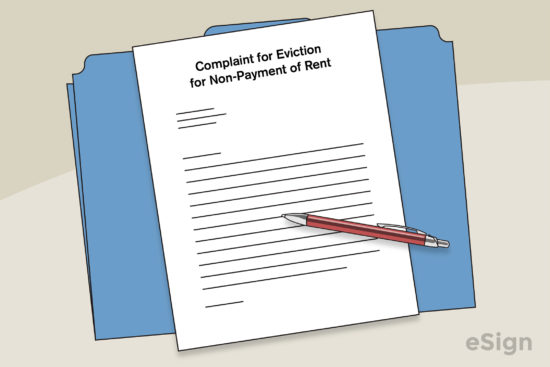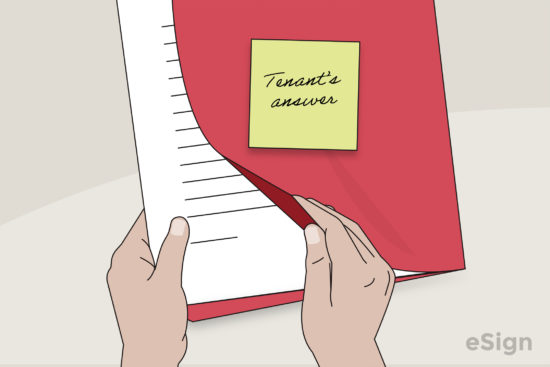Eviction Notices: By Type (4)
 5-Day Notice to Quit | Non-Payment – Provides a tenant five days to pay overdue rent or quit the premises. 5-Day Notice to Quit | Non-Payment – Provides a tenant five days to pay overdue rent or quit the premises.
Download: PDF |
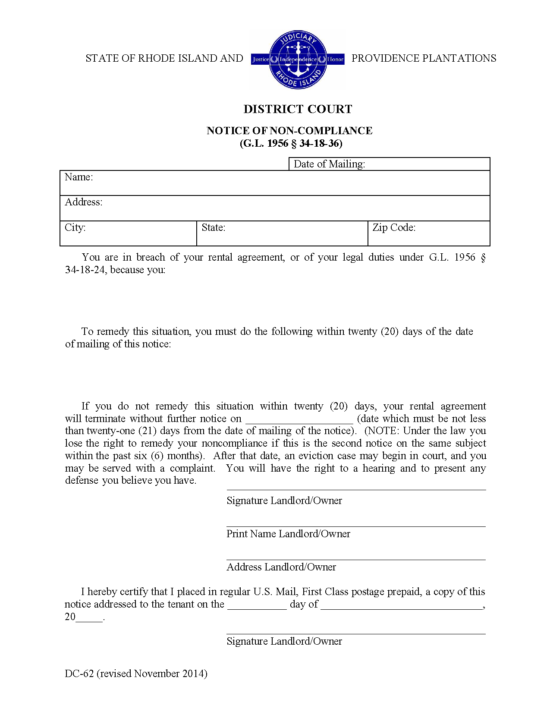 20-Day Notice to Quit | Non-Compliance – Informs a tenant that they have 20 days to cure a lease violation or move out. 20-Day Notice to Quit | Non-Compliance – Informs a tenant that they have 20 days to cure a lease violation or move out.
Download: PDF |
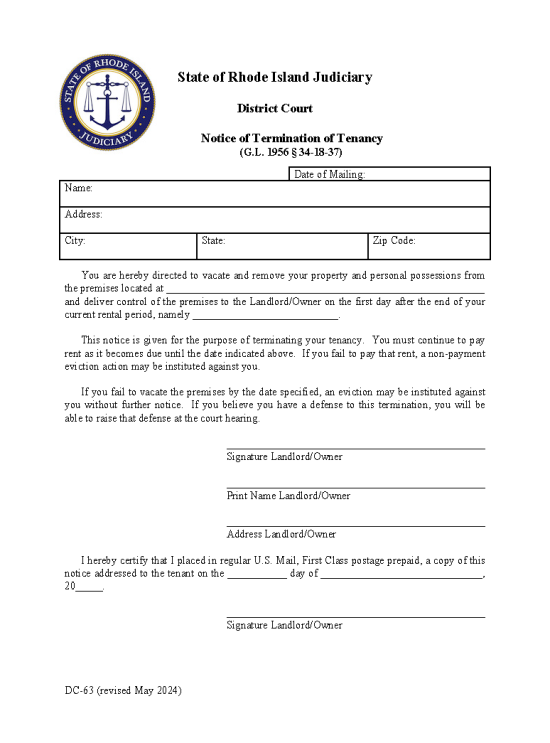 30-Day Notice to Terminate | Month-to-Month Tenancy – Terminates a month-to-month rental agreement with 30 days’ notice. 30-Day Notice to Terminate | Month-to-Month Tenancy – Terminates a month-to-month rental agreement with 30 days’ notice.
Download: PDF |
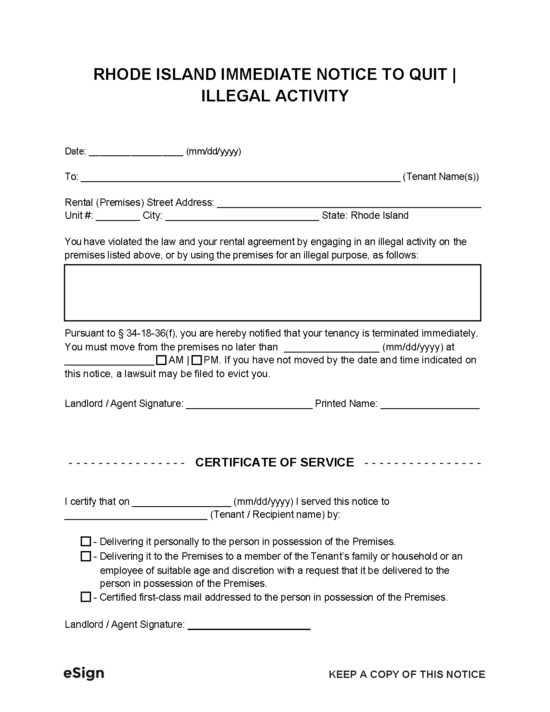 Immediate Notice to Quit | Illegal Activity – Informs a tenant their lease is terminated immediately and they must move or face eviction. (Optional) Immediate Notice to Quit | Illegal Activity – Informs a tenant their lease is terminated immediately and they must move or face eviction. (Optional)
Download: PDF, Word (.docx), OpenDocument |
Notice Requirements
How to Evict a Tenant in Rhode Island
Step 1 – Complete Notice to Quit
Before filing for an eviction due to non-payment or non-compliance, landlords must deliver the tenant a notice to quit via first class mail, postage prepaid. A copy should be retained for their records.
If the eviction is due to illegal activity, notice is not required but may cause the tenant to vacate without court involvement.
Step 2 – File Complaint for Eviction
If the tenant does not move out by the notice deadline, the landlord can startt the eviction process by filing a Complaint for Eviction for Non-Payment of Rent or Complaint for Eviction for Reason Other than Non-Payment of Rent with the District Court in the county where the property is located.
Step 3 – Serve Documents
After the Complaint is filed, the court will issue a Summons specifying the hearing date. The landlord must send the Summons, Complaint, and a blank Answer form via first class mail to the tenant. Copies of the forms are also served on the tenant by a court sheriff.
Step 4 – Tenant’s Answer
The tenant can contest the landlord’s claims by filing the completed Answer form with the court before the hearing date and mailing a copy to the landlord. If no Answer is filed, the tenant may lose the case by default.
Tenants have 20 days to file an Answer after receiving the Summons if being evicted due to non-compliance or holding over after a lease termination. For evictions due to non-payment, the Answer may be filed anytime before or on the hearing date.
Step 5 – Attend Hearing
At the hearing, the judge will consider the evidence before issuing a verdict. If they decide in favor of the tenant, the lease will not be terminated and they can continue their tenancy. If the landlord prevails, the judge will issue a judgment for possession and a date will be set by which the tenant must move out.
Step 6 – Writ of Restitution
After the judgement is issued, the tenant has five days to appeal the decision or move out. If the tenant continues occupying the property after the deadline, the landlord may obtain an execution from the court to remove them.
The execution must be given to the sheriff’s office, after which an officer will be dispatched to remove the tenant from the unit.
Court Forms + Resources
Forms
- Complaint for Eviction for Non-Payment of Rent (DC-54)
- Signed by: Landlord
- Complaint for Eviction for Reason Other than Non-Payment of Rent (DC-38)
- Signed by: Landlord
- Answer Defendant/Tenant (DC-53)
- Signed by: Tenant and Server
Resources
